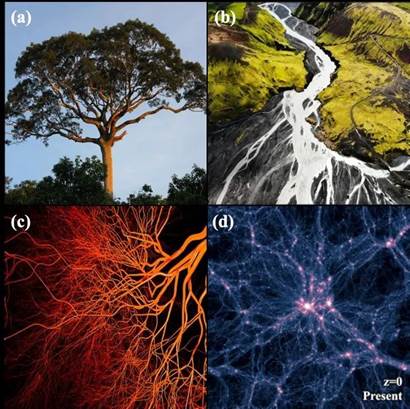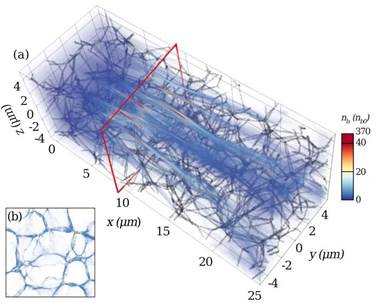A research team from Shenzhen Technology University (SZTU) has discovered the phenomenon and law of branching of high-current relativistic electron beam (REB) in porous materials. The team was led by Prof. Ruan Shuangchen, president of SZTU, and Prof. Zhou Cangtao, dean of College of Engineering Physics. Postdoctoral fellow Jiang Ke is the first author, and Prof. Huang Taiwu, Prof. Zhou Cangtao and Prof. Ruan Shuangchen are the co-corresponding authors. All of the authors are research and teaching staff from different units of SZTU, including the College of Engineering Physics, Center for Advanced Material Diagnostic Technology and Shenzhen Key Laboratory of Ultraintense Laser and Advanced Material Technology. The research team published an article titled “Branching of High-Current Relativistic Electron Beam in Porous Materials” in Physical Review Letters. The full text of the article can be found at: https://journals.aps.org/prl/abstract/10.1103/PhysRevLett.130.185001.

Branching in nature [Photo/Center for Advanced Material Diagnostic Technology]
Branching is a ubiquitous phenomenon observed in nature, such as the growth of tree branches, the diversion of river water, the structure of capillaries, and the distribution of dark matter in the universe. Branching, also known as branched flow in physics, refers to the physical phenomenon in which a branched filament structure is formed when a wave or particle beam is transmitted through a weakly disordered medium with long-range spatial correlation. No research had been conducted on branching in high-energy-density physics driven by strong lasers or intense particle beams, and the impact of background medium inhomogeneity was previously unclear. SZTU researchers have discovered that dense branches can be formed when high-current REBs are transported in porous foam. Such branched flow transport regime can bring highly focused high-current electron beams with high coupling efficiency. This interaction regime may open up new prospects for charged-particle beam interactions with fine structured materials, which could have a significant impact on research in laser fusion, laser acceleration, laser nuclear physics, laboratory astrophysics, and other related fields.

(a) Beam density (colored) at t ¼ 120 fs from a 3D simulation for REB branching in porous foam. (b) Transverse cut of the beam density at x ∼ 8.7 μm (marked by the red rectangle) showing the caustics. [Photo/https://journals.aps.org/prl/abstract/10.1103/PhysRevLett.130.185001]
The simulation was conducted on the supercomputing simulation platform at the Center for Advanced Material Diagnostic Technology, achieving a peak performance of 600 trillion calculations per second.
Drafted by Daisy(姚琦)/ International Cooperation & Student Affairs Office
Revised by International Cooperation & Student Affairs Office
Edited by International Cooperation & Student Affairs Office
